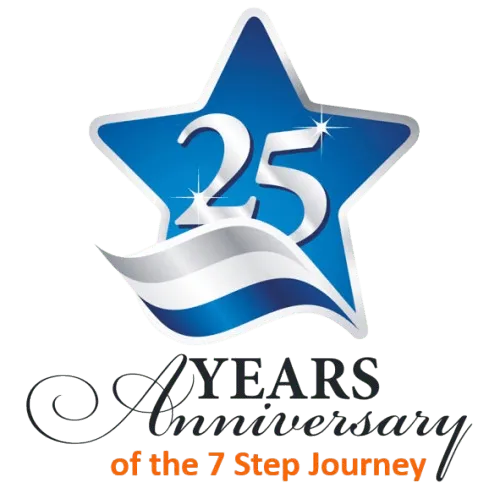Your Clutter Cake
Your Clutter Cake
If you could have any flavour cake in the world, what would you choose?
If you ask 100 people the same question, you’d almost certainly get a huge variety of flavours, and there would be just as many reasons why people pick the flavour they pick. I, for example, will never pick a chocolate or coffee cake (unless it’s a white chocolate cake) because I’m allergic to chocolate and coffee. (It’s a ‘bean’ thing apparently).
Regardless of what flavour you pick, your reasons for picking it and your horror that someone else could choose a flavour you hate, all the cakes would have 4 ingredients in common: flour, fat, eggs and sugar.
They are also all baked. Some have milk, some have flavourings, some have fruit. Some cakes are baked for longer than others, some have a longer shelf life than others, but they all have those 4 basic ingredients in common.
We can have the discussion another day about whether a jaffa cake is really a cake.
Why am I talking about cakes on a Clutter Clearing Blog?!
When people ask me ‘why do I have my clutter challenge? What causes it?’, I always explain that their clutter is like a cake.
Everyone has a Clutter cake that is unique to them, yet they all have 4 common ingredients. It’s the flavourings you have that make your Clutter cake as unique as your fingerprint and is why no one can – or ever should – make assumptions about you, your clutter and what’s right for you.
If, 20 years ago I’d paid an ‘expert’ to ‘help’ me declutter, they may have assumed I had a chocolate cake, and ‘helped’ me and given advice based on that assumption, that would have been disastrous for me.
Let’s take a look at the 4 common ingredients in everyone’s Clutter Cake.
1. Trauma
Just to be clear – when I use the word trauma, I’m not suggesting we’ve all had a dramatic, required immediate intervention type trauma. Most trauma goes undetected at the time.
For example, I only became aware that I had been interfered with by a babysitter at the age of 5 when I watched a BBC Appeal being launched on TV in 1986 – Childline. I watched a dramatization that caused me to question past events which I then kept to myself for the next 3 years, not telling anyone.
A trauma is an emotional response to a terrible event, and we may not realise the impact it has on us until much later. What is a trauma to one person may not be a trauma to another, so judging or comparing traumas is both unhelpful and dangerous.
Even if our conscious mind doesn’t register the event as a trauma at the time, you can be sure your subconscious mind has registered it and is acting accordingly. Yet unless our conscious brain tells our subconscious brain it’s safe to process the trauma, our subconscious brain will be forever behaving in a constant state of fight or flight to protect us, until it gets further instructions to do otherwise.
Bullying, the loss of a loved one, serious illness in the family unit, moving home, children leaving home – there are lots of different types of traumas that can occur at any time in our life. They can cause us to seek comfort and healing by forming emotional attachments to things and feeling the need to keep and protect these things, irrespective of their practical use.
2. Safety / Control
The way our brain responds to a trauma either consciously or subconsciously, has one key objective – to make us feel safe again. The trauma has made us feel out of control of our environment and our world, so naturally we want to feel safe again.
For example, if we’ve experienced financial trauma, whether it was as a result of financial instability, the end of a relationship, a recession, losing a job etc, and we’ve experienced the fear of not being able to buy essentials, feed ourselves or pay the bills, maybe even losing a home as a result, it makes sense that our response would be to want to feel financially safe again.
Some people would respond to this type of trauma by never spending anything and saving everything.
Others would respond by making sure they have a stock of essentials, buying things when they’re on special offer.
Some people will respond by doing both and end up with a poverty mindset and bulk buying the cheapest things available, believing they don’t have any spare money, regardless of how much money they actually have.
Some people will only feel safe when they can SEE that they have money in the bank and an unlimited stock of essentials in their home.
3. Habits
For something to become a habit we must consciously repeat it between 66 and 254 times. The bad news is, if we’ve experienced a trauma, either consciously or subconsciously, and especially if it was when we were young when we had limited skills and experience to know how to deal with that trauma, we only had to respond to it in a particular way between 66 and 254 times for that response to the trauma to become a habit. The really bad news is that the older we get, the closer to the 254 times we have to consciously repeat something to either BREAK or MAKE a new habit.
For example, my mother constantly told me from an early age she wished she’d never had children. She was emotionally distant. I was discouraged from expressing my feelings and dismissed if I did. I didn’t know it at the time, but this caused me repeated emotional trauma.
When this started, I looked for other ways to get love and affection. I turned to our pet dog. I would climb onto the kitchen counter, open the dog cupboard, and share dog biscuits with Heidi, our golden retriever. Heidi gave me the love and affection I craved when I gave her a treat. I built an emotional bond with her by sharing food.
I didn’t know, at the tender age of 4, that my behaviour was a response to the emotional trauma, but as a result I developed a habit of emotional comfort eating.
4. Fear
Fear is the fourth common ingredient of our Clutter cakes.
A fear of change, a fear of failure, a fear of a lack of approval in the eyes of others, a fear of forgetting or being forgotten, a fear of losing that sense of safety and control, a fear of not mattering, a fear of ‘what if’… the list of possible fears is endless.
Yet it’s not just the fear of the unknown and unpredictable future that’s a core ingredient of our Clutter cake. We also have a fear of the past. A fear of acknowledging, facing and finally processing the trauma.
The one thing all the fears have in common is a fear of changing the status quo. We want to let go of the clutter, but we have a fear of the void that may be left. A fear that our lives will be empty without it.
When we start our Clutter Clearing Journey, we’re finally choosing what cake we want in our future rather than just accepting what we have.
Use your LIFE Timeline to help you see how these 4 ingredients have created your current Clutter cake.
Then take some time to process the trauma, decide how you can get the safety and control you need in your future Clutter Free cake, choose which habits you want, and get the help you need to face the fear.
Happiness is about a conscious choice, not an automatic response.
If you are ready to change your Clutter Cake, find out how Clare can help you get started now:

